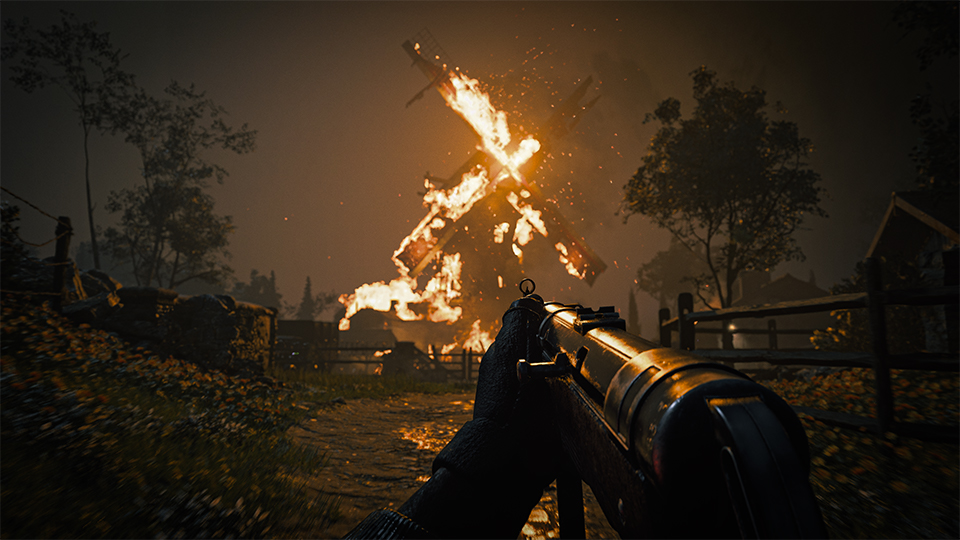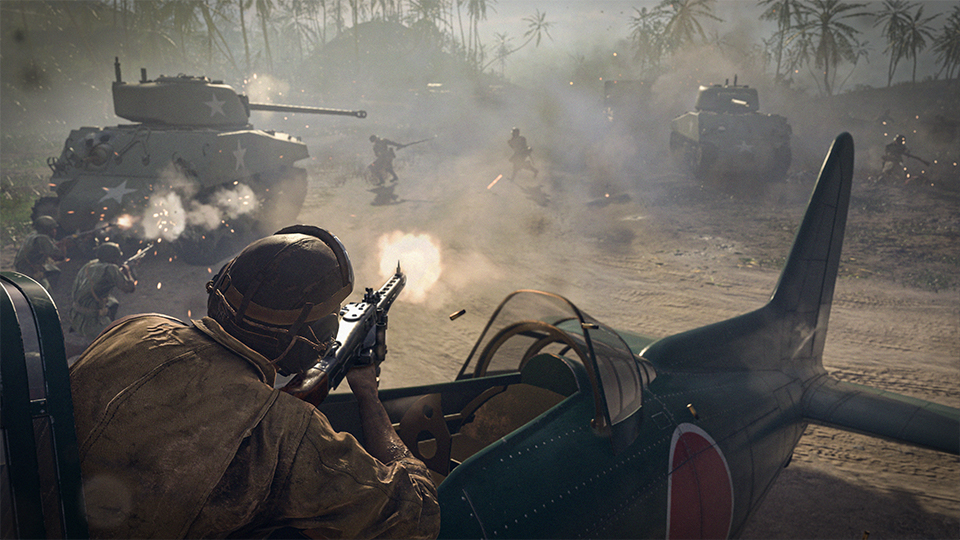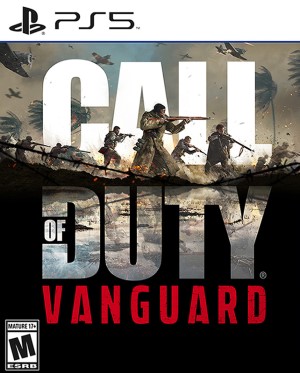
With Call of Duty: Vanguard, you know what you’re getting. It seems like an increasing inevitability at this point that every year’s new Call of Duty game doesn’t do much to push the series forward and instead polishes its wildly successful formula and moves laterally with new maps and modes and a new campaign, with the only variability coming in the form of new campaign quality or map popularity. Vanguard, admittedly, is about as high on that spectrum of quality as any game in the franchise over the past few years. Its campaign is memorable with its admirable, if limited risks, and the multiplayer and Zombies modes are highly familiar affairs but still bring the franchise’s signature addictive qualities that keep you wanting to go one more round. There’s no particular glowing achievement in Vanguard, but there are no glaring missteps, either. Instead, Vanguard seems to understand a lot of what has worked in the past for the series and recycle it with a handful of tweaks but no major risks, so while it’s as genuinely fun to play as ever, it’s equally as hard to get excited about.
Developed primarily by Sledgehammer, Vanguard revisits the World War II setting (they were also behind the development of WWII). And Sledgehammer does the majority of its formula tinkering in the campaign. It’s not so focused on a larger conspiracy or a massive scope this time around. Despite the setting, Vanguard’s campaign chooses to focus on a cohort of six specialist Allies acting as an underground team known as Task Force One on a top-secret infiltration mission to steal Nazi intel. That’s the basis for the campaign, at least, but the meat of the story comes as the group are locked in a Nazi holding cell and individually interrogated by a Nazi commander, bringing out individual stories to explain who they are and how they got there. Most of the playable missions have you take control of these flashbacks and see first-hand who these special forces are. This allows the missions to have some variety from one another, primarily in level and environment design. Wade Jackson, for one, is a noted American pilot, so one mission sees him flying a jet and dropping dive bombs on an aircraft carrier. Another member, Polina Petrova, is a young Russian sniper who gets what amounts to an origin story, as she deals with the death of a family member during the Nazi occupation of Stalingrad.
"Vanguard seems to understand a lot of what has worked in the past for the series and recycle it with a handful of tweaks but no major risks, so while it’s as genuinely fun to play as ever, it’s equally as hard to get excited about."
The nine total story missions only run around 5-6 hours, and they don’t overstay their welcome. The story is generally well-paced, and I enjoyed learning about each new character, as they’re all well-performed and astonishingly well-animated. Polina, played by an instantly recognizable Laura Bailey, is a clear standout with her almost Mirror’s Edge-like parkour sections early on and sniping focus that emphasizes her growth into a Russian hero. Between each playable mission, too, you get a glimpse into the state of Task Force One in their present day of 1945 as they attempt to get out of the holding cell, during which you also hear about the state of the war. Even the German commanders are somewhat well-written, though the game doesn’t even attempt to show you the motivations of the people in charge. These mid-game cutscenes can run long but are ultimately interesting enough interludes and hold the entire story together.
The only issue with the campaign is that, while its storytelling deviates from the standards of the franchise, each mission operates more like checking a box than creating unique moments. Even though the gameplay is widely fun, you can tell from the start what each mission’s purpose is. There’s the pure stealth one, the pulse-pounding vehicle one, the high-pressure airfield one, to name a few. Its blatant retreading of old ground draws direct comparisons to the other games in the series that bring the experience back down to earth despite the variety in the characters you’re playing, and it makes the whole campaign feel somewhat staler than it had the potential to be.
The bread-and-butter of Call of Duty is its online multiplayer, and it’s simultaneously Vanguard’s best and safest mode. Very little has changed about the core formula of Call of Duty’s multiplayer over the past few years, as much of the broad attention has shifted to Warzone, so while Vanguard does have a couple new ideas, it mostly resigns itself to a fresh coat of paint. The most prominent addition is the new Champion Hill mode, where up to 8 groups of 1, 2, or 3 players face off head-to-head with a limited number of lives, switching the matchups regularly to act as less of a tournament and more of a round robin, and the last team with respawns remaining wins. This mode is a fun detour from core modes like Team Deathmatch or Domination, though it doesn’t feel as long-lasting as its counterparts due to its somewhat slower pace, though it does have 4 maps tied directly to it.
"While its storytelling deviates from the standards of the franchise, each mission operates more like checking a box than creating unique moments. Even though the gameplay is widely fun, you can tell from the start what each mission’s purpose is."
Otherwise, the multiplayer is almost identical to past iterations. There are 12 operators that you can unlock, giving you a slight boost in areas specific to the operator but don’t offer anything truly game-altering aside from a new skin. Some of them are almost laughably more difficult to unlock than others, too. One requires just 10 killstreak kills to unlock, while another requires 300 sniper kills, almost as if it’s trying to subtly show progression and get you to try out new weapons but without much of any kind of payoff. The new maps are a step up from last year’s Black Ops Cold War, though, especially maps like Bocage and Demyansk, which ramp up the twitch feeling to a new level. In fact, there’s only a small handful of the 20 total maps, of which Dome and Castle return from World at War, that I don’t enjoy playing. They’re incredibly familiar at times, but they provide the structure and close-quarters chaos that I come specifically to Call of Duty for. You can also now choose to join games with more or fewer players on certain maps, so depending on your skill level or desire for chaos, you can opt for a more or less crowded experience. Vanguard does ultimately hit every multiplayer note it should so it can hold up for the next year, though it’s easy to recognize the familiarity of the weapons, map structures, and overall feel of gunplay. In truth, though, multiplayer is just as fun as it’s always been and will certainly keep me coming back for more, even if it too feels more like a retread than a new experience.
Zombies has taken a right turn from past iterations despite being primarily developed by Treyarch instead of Sledgehammer. This iteration of the mode, called Der Anfang, is said to be more of a roguelite-inspired prequel to Black Ops Cold War’s Dark Aether story. You’re dropped into an effective hub area, which contains places for you to upgrade weapons, increase your health, buy from the Mystery Box, and anything else you’d need to do to get ready for a round. While there are zombies in the hub area, progression occurs by teleporting to areas outside of the hub and completing objectives that range from surviving a Blitz to overloading a rune with collectable shards. Once you’ve completed the first four rounds, the entire hub area is opened and it’s possible to exfil and end the run successfully, or you can continue round by round as the objectives get harder but the rewards get bigger.
In concept, this offers theoretically infinite playtime, but it’s limited by the very few areas and objectives outside of the hub and the general sense of a safety net. There are really only four types of objectives and a small handful of maps you can complete them in, so even by the time you’re on round 10, it’s likely to start getting repetitive. The option to exfil after every round, too, makes the entire experience stutter, like you’re never in true danger given the short nature of so many objectives. As always, the gunplay transfers well, and Treyarch knows how to make the environments eerie and the situations tense, but Der Anfang doesn’t quite offer the sense of pressure and payoff that this type of mode needs to feel worth it. Once it starts getting repetitive, you might as well exfil and start again rather than risk losing it all on your third repetition of the same objective, which is a shame for a mode that so frequently has gotten it right, but it’s definitely still a mode that those who love Zombies will come to appreciate nonetheless.
"Multiplayer is just as fun as it’s always been and will certainly keep me coming back for more, even if it too feels more like a retread than a new experience."
Call of Duty: Vanguard proves that the franchise has done almost everything it can do without breaking out of its shell and trying something vastly different. Vanguard does so many things really well, from its interesting and surprisingly well-written cast of campaign characters to the impressive, if familiar multiplayer modes and maps. While Zombies isn’t as engaging as past iterations, there are many things going for Vanguard, but it’s also clear that this installment lies firmly within the formula that no Call of Duty game has broken in years. If you know Call of Duty, you know what you’re getting with Vanguard, but while it often thinly veils where it almost regurgitates past games, it’s intriguing in enough new spots and as satisfying in gameplay as ever to warrant at least a look from skeptics.
This game was reviewed on the Xbox Series X.
Diverse cast of characters; Superb acting and visuals; Expectedly fun gameplay; Great multiplayer maps.
Underwhelming Zombies mode; Often a box-ticking exercise.


















